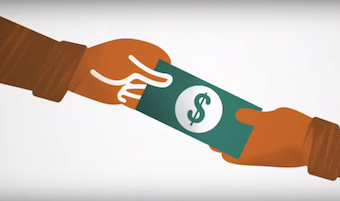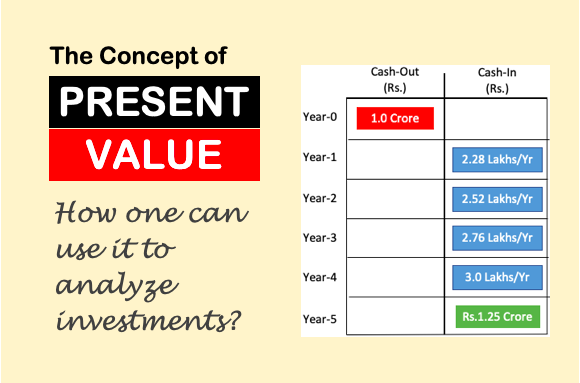FD are favourite investment vehicle, right? But is it possible to earn higher interest on FD investment?
Fixed deposits (FD) remain one of the most trusted investments in India.
People of all ages and all backgrounds loves investing in fixed deposits.
But there are ways to earn higher interest on FD?
FD promises a guaranteed interest.
If we can also earn higher interest rates on it, FD becomes a very attractive investment option.
For those seeking safety and good returns alike, investing in FD is a reasonable alternative
There are not ways to earn higher interest on FD account.
Lets have a look on those ways using which can enhance the potential of returns of FD.
#1. Interest rate – research multiple FD’s
It is essential to look at multiple fixed deposit interest rates before deciding on a particular scheme.
One must also keep the tenure in mind.
This is essential to check if it aligns with your requirements.
Fixed deposit interest rates may vary across different banks, and different schemes within those banks.
Fixed deposits are offered by banks; financial institutions (FI) and non-banking finance companies (NBFCs).
It is worth researching interest rates offered by these institutions.
Generally nationalized banks offer lower rates than others.
Hence, while doing research on multiple FD’s, keep note that if the rate offered is by a bank, financial institution or NBFCs.
Final decision shall be taken accordingly.
Generally banks are safer than FIs & NBFCs.
There are people who accept lower interest rates on FD for the sake of keeping their deposits safer.
So one must be ready to accept a bargain between higher interest rate and safety.
Though it is also a fact that banks in India are a very closely guarded entity.
Hence most operating banks are safe.
#2. Interest calculation – check how it is done
Interest rates is a fundamental prerequisite before settling for a scheme. But one cannot cannot discard the importance of how the interest is calculated on the deposit.
Interest rate on fixed deposit is calculated at different stages.
- (a) Quarterly (interest calculated 4 times per year)
- (b) Half-yearly (interest calculated 2 times per year)
- (c) yearly or at the maturity (interest calculated only once per year)
Consider this example. Suppose we have a bank A and bank B.
Bank A offers 9% interest per year on a five-year fixed deposit and calculates the interest on a quarterly basis.
Bank B offers you the same 9% fixed deposit interest rate for the same duration.
However, it computes the interest only once a year (yearly basis).
Therefore, Bank A will fetch more interest compared to Bank B.
The more often the interest is calculated in a year by banks on FD, the higher will be its effective net return.
#3. Save on TDS and earn higher net return
A TDS (tax deducted at source) of 10% is charged on fixed deposits if the fixed deposit interest rate is more than Rs.10,000 per year.
A good way to avoid TDS is by splitting the fixed deposit amounts.
Instead of opening one account and investing all your money in one FD, one can split the amounts in smaller amounts.
The split amounts can then be invested in FD’s between two or more lenders.
The idea behind doing this should be to keep the interest generated by one FD below Rs.10,000 per year.
One can also avoid TDS by opening fixed deposit accounts in different branches of the same lender.
Breaking a big amount into smaller FD’s has another advantage.
If money is needed to manage an urgency, one may not need to break the whole FD.
As there are several FD’s, braking one FD may meet the money need.
This way, during emergency, the desired interest income from FD will not get compromised a lot.
#4. Reinvest the interest – make it work harder
A defensive investor may have preference for FD over other investment options like equity.
But this way the investor returns are only lower. But there is a way out.
Without disturbing the defensive approach to investing, one can protect the principal amount and reinvest only the interest component in higher return generating options.
Lets see an example. Suppose one has invested a amount of Rs.100,000 in FD.
Annual interest one can earn on this FD (9% p.a.) is say Rs.9,000/year.
Idea is, lets the FD mature and the amount of Rs.100,000+9,000 be credited in your bank account.
Once the amount is credited, use the interest component Rs.9,000 to be invest in equity linked mutual fund.
One can invest in equity linked mutual fund through SIP route.
Suppose this SIP yields a return of 12% per annum.
The net effective return of FD plus SIP is higher.
This way the same money earns higher returns as compared to the case where money is left stalling in FD alone.
A combination of FD with equity also ensured great investment diversification.
But important here is to note that, the principal amount (Rs.100,000 in our example) is completely safe.
Only the earned interested from FD has been invested in riskier option like equity.
This is a nice bargain for those investor who wants to earn higher interest on FD investment without compromising the safety net offered by the FD’s.
#5. Overdraft Facility – prevent breaking the FD
Normally we do not want to break our FD’s.
But when the situation changes, the priority may also change.
This change in priority may be due to an emergency situation one is facing in life.
One such example of emergency condition is medical SOS.
In such cases what we do? We often break our FD, improve our liquidity, and manage the emergency medical need.
I know a person who invests heavily in FD’s. But he managers his FD very intelligently.
Considering that he has large FD’s with his banks, the banks also offer him additional benefits.
The benefits are not offered in terms of higher interest rates, but in term of overdraft facility.
Hence, when he faces any emergency condition, he does not opt to break his FD.
Instead, he uses the overdraft facility offered by banks and meet his emergency needs.
This way his FD remains intact and interest keeps compounding.
This may look like a very elementary idea, but its long term impact on ones net worth is phenomenal.
Allowing ones money to stay locked in FD even under extreme emergency situation is also a good way to earn higher interest on fd.
I strongly recommend my readers, who invest heavily in FD, to consider activating overdraft facility.
But one must remember that this facility also works a double edged sword.
If not managed property, it may hurt in more ways than one.
Final words…
Looking for FD investment that checks all the boxes?
Consider opting for an FD account with Banks and NBFCs, which offers high interest rates and other benefits as discussed above.






3. SAVE ON TDS AND EARN HIGHER NET RETURN
This is not correct.
AS tds amount is either adjusted against your tax payable or refunded on filing incometax return as the case may be.
I appreciate your idea of investing interest into eqity.
Thanks for your nice article with new vision.
You are right. But at the time of the payout, the depositor receives less due to TDS. This was my point.
Of course, after the returns are filed, the amount may be refunded or adjusted as the case maybe. But this step is often 6-8 months away from the date of the payout.
For a retired person who relies heavily on FD for monthly income, TDS deduction makes a difference.